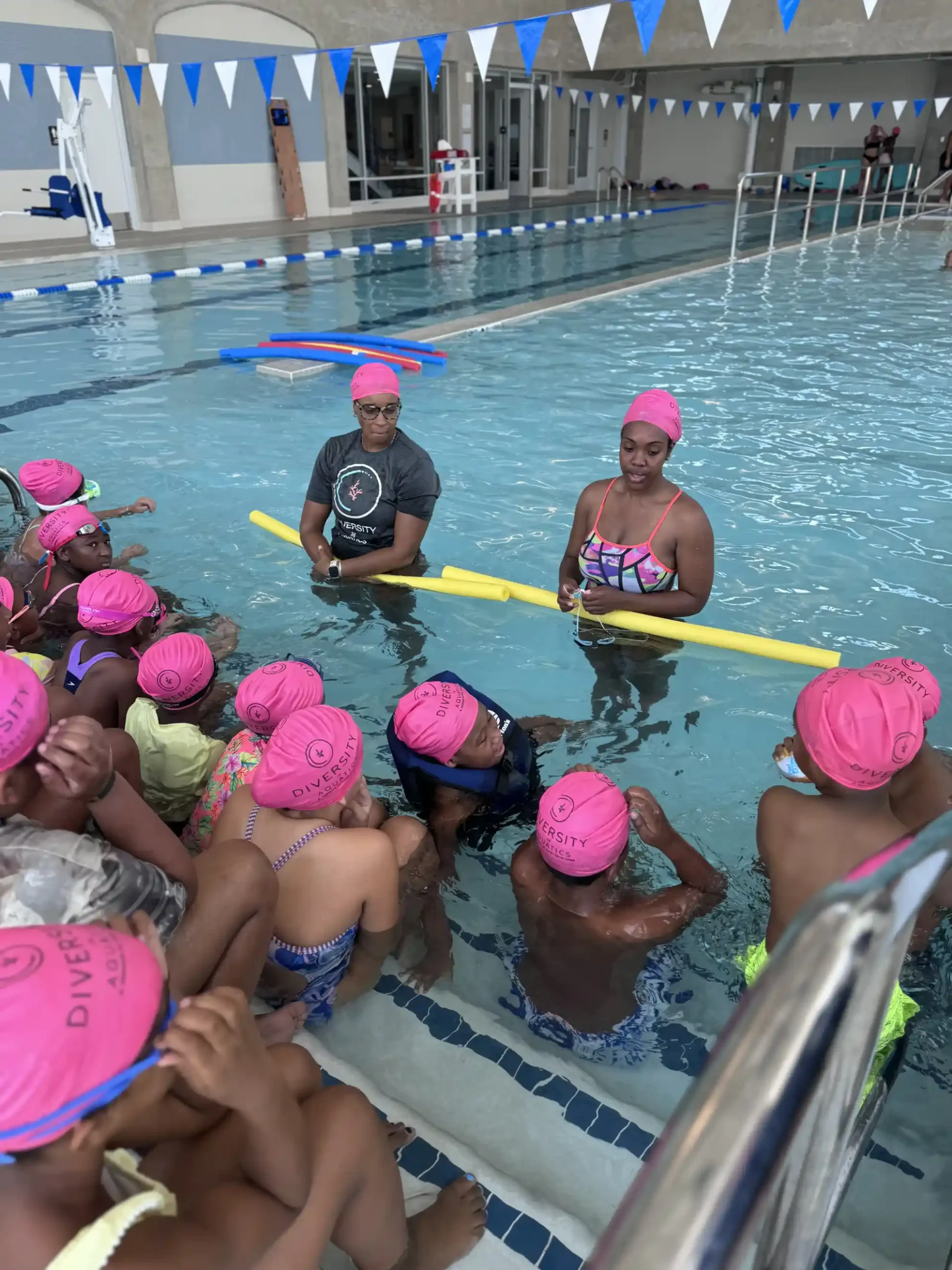Building Inclusive Aquatics Communities
Inclusive aquatics communities are essential in the effort to prevent drowning and promote well-being. They reflect a commitment to making water activities accessible to all individuals, regardless of background, ability, or socioeconomic status.
Historically, access to aquatics and water safety programs has been uneven due to political, cultural, and resource-driven barriers. This article outlines these disparities and presents practical, inclusive strategies for aquatic sports directors, education policy advisors, and parents to help shape more equitable aquatics environments.
Together, we can redefine swimming as a sport—and life skill—for everyone, promoting health, safety, and social inclusion.
Inclusivity in aquatics ensures that people of all ages, identities, and abilities can enjoy the benefits of swimming. More than just recreation, swimming promotes cardiovascular health, mental resilience, and essential safety.
Creating inclusive environments means addressing and removing physical, economic, and cultural barriers. By doing so, we enhance community connection, foster belonging, and enable diverse participation that enriches the aquatic experience for all.
Access to aquatics has historically been limited for many due to segregation, discriminatory practices, and long-standing inequities. Recognizing this context is essential.
Programs that reflect local cultures and experiences help foster trust and participation. Inclusive aquatics begins by honoring diverse histories and building bridges through awareness, education, and culturally responsive programming.
Policy and funding decisions often shape who gets access to swimming facilities. Budget cuts, location disparities, and lack of political will can disproportionately affect marginalized communities.
To counter this, leaders must advocate for inclusive policies and targeted investments. Public-private partnerships, equity-focused funding models, and grassroots advocacy are essential tools in expanding access and building inclusive aquatics communities.
Swimming is a powerful tool for improving public health. It boosts physical fitness, supports mental well-being, and builds lifelong habits of physical activity.
Community pools also serve as vital social spaces. When swimming is accessible, it enhances cohesion, promotes safety, and contributes to overall community resilience. Prioritizing swimming access in public health planning ensures broader, lasting impact.
Inclusive aquatics must provide for individuals with disabilities through adaptive programs that offer tailored instruction and support.
From sensory-friendly sessions to one-on-one swim coaching, these activities ensure equitable access and a richer, more inclusive aquatic culture. Adaptive aquatics embodies the belief that everyone deserves the chance to enjoy and benefit from water-based activities.
Aquatic sports directors play a key role in shaping welcoming programs. Inclusive programming means offering a range of swim classes—group, individual, adaptive, cultural—and adjusting teaching methods for diverse learning styles.
Staff should receive ongoing training in cultural humility, disability inclusion, and trauma-informed practices. Programs should reflect community diversity and be co-created with local input.
Local partnerships with schools, nonprofits, and disability organizations can extend reach and relevance, while multi-language materials and diverse instructors help reflect the community’s identity.
Infrastructure is foundational to inclusivity. Physical spaces must be accessible to participants with mobility, sensory, or cognitive differences.
Key features include:
Web accessibility also matters: facility websites should follow WCAG standards, ensuring that people with visual or auditory impairments can find and access program information online.
Effective community engagement builds trust and increases participation. Outreach should go beyond marketing—create two-way conversations.
Strategies include:
Engaged communities are more likely to support, participate in, and sustain inclusive aquatic programs.
Ongoing education is vital for sustaining inclusive aquatic communities. This includes:
Educational efforts should also emphasize allyship, listening, and humility—core values in building inclusive spaces.
It prevents drowning, promotes health, and ensures everyone benefits from water activities.
Programs that offer adaptive swimming, multilingual lessons, and culturally tailored events.
Add ramps, lifts, adaptive gear, and ensure your website and signage are accessible.
Integrate swimming into PE, fund transportation to pools, and support adaptive lessons.
Cultural humility, disability inclusion, trauma-informed care, and anti-bias education.
Look for programs that welcome all children, have adaptive options, and culturally responsive staff.
They can allocate funding, prioritize access, and create equity-focused aquatics policies.
Start by listening. Collaborate with trusted local leaders and co-create solutions.
They ensure people with disabilities can safely enjoy swimming and gain vital skills.
Ensure websites are accessible, use diverse images, and offer materials in various formats and languages.
